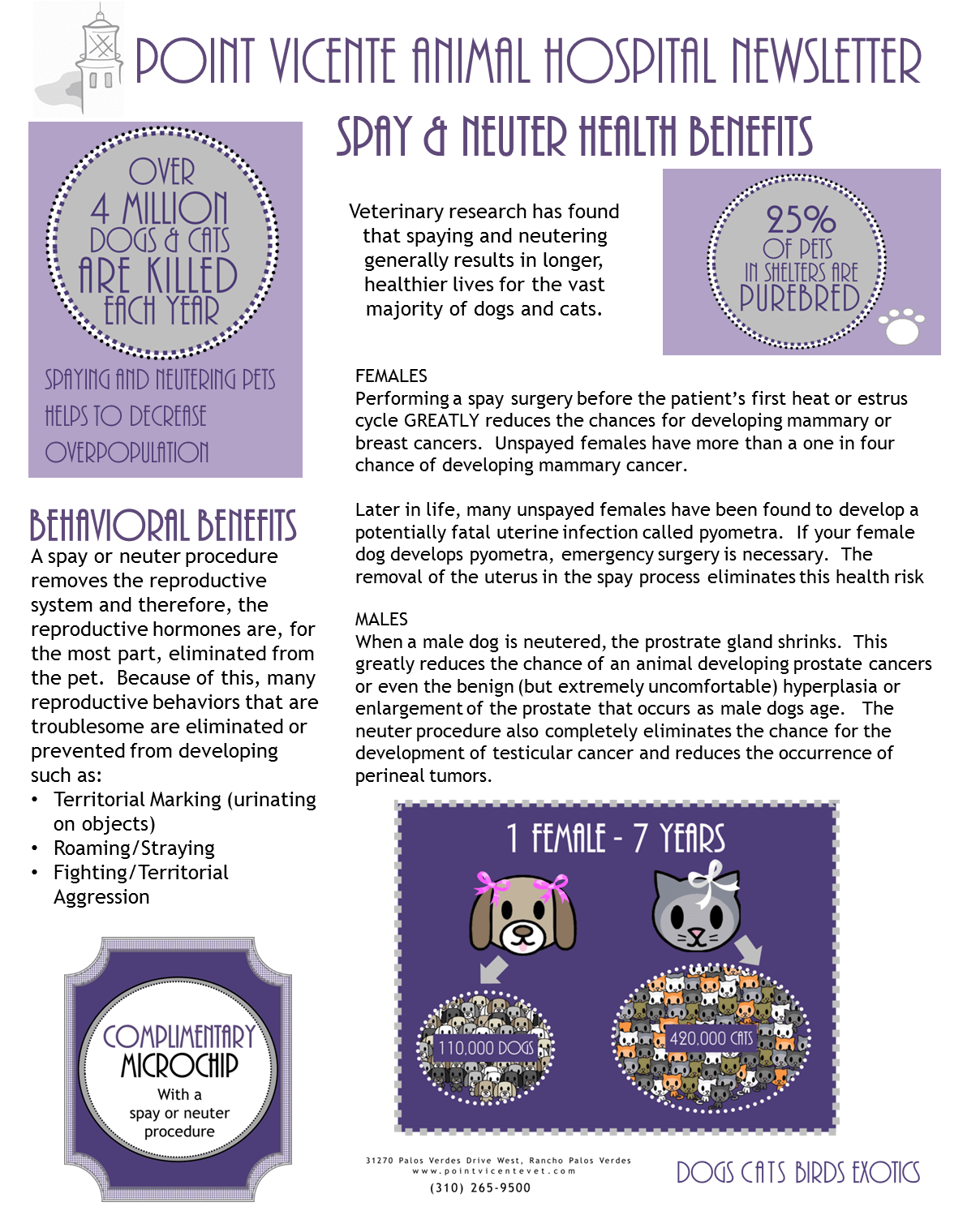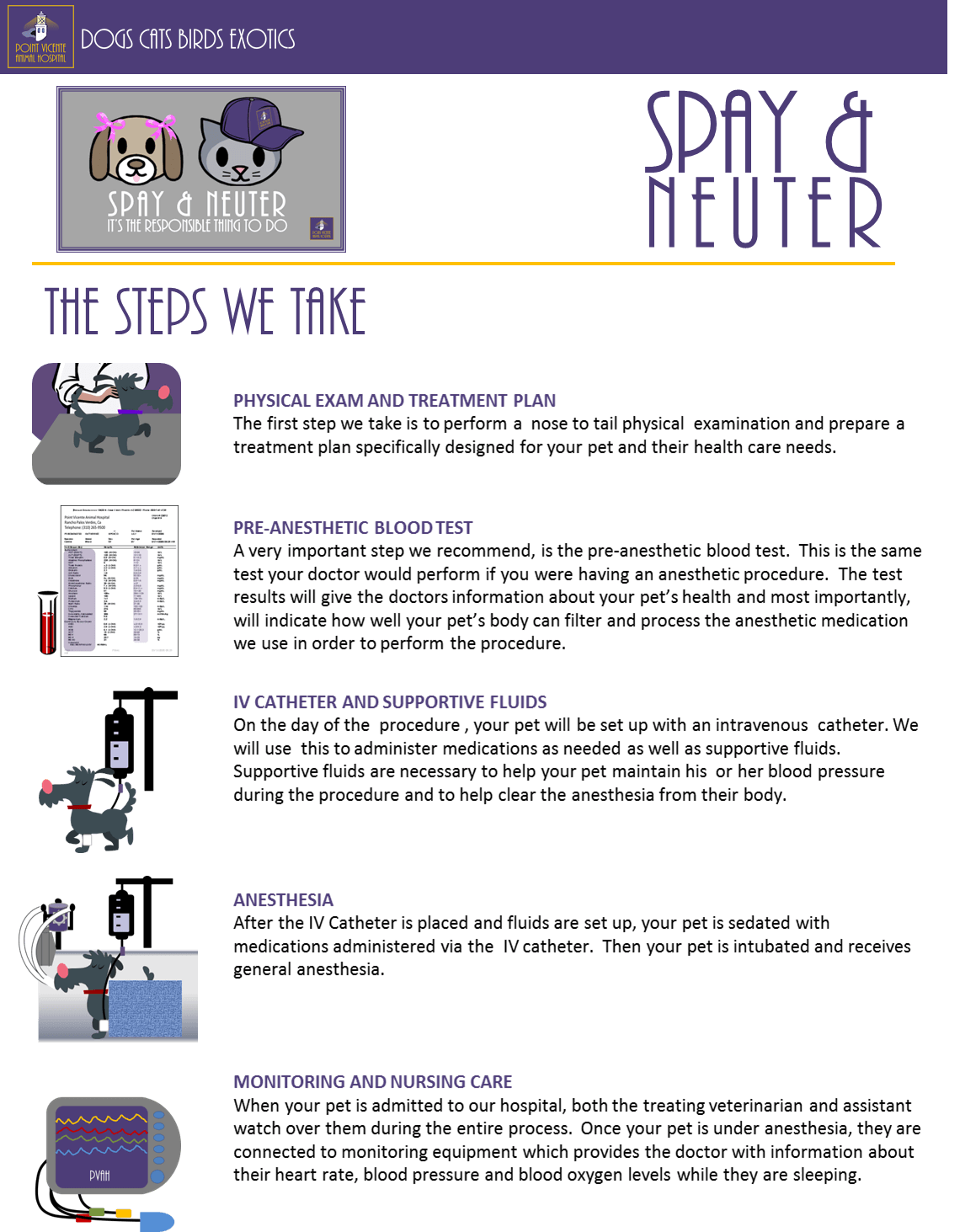Physical Exam And Treatment Plan
The first step we take is to perform a nose to tail physical examination and prepare a treatment plan specifically designed for your pet and their health care needs.
Pre-Anesthetic Blood Test
A very important step we recommend is the pre-anesthetic blood test. This is the same test your doctor would perform if you were having an anesthetic procedure. The test results will give the doctors information about your pet’s health and most importantly, will indicate how well your pet’s body can filter and process the anesthetic medication we use in order to perform the procedure.
IV Catheter And Supportive Fluids
On the day of the procedure, your pet will be set up with an intravenous catheter. We will use this to administer medications as needed as well as supportive fluids. Supportive fluids are necessary to help your pet maintain his or her blood pressure during the procedure and to help clear the anesthesia from their body.
Anesthesia
After the IV Catheter is placed and fluids are set up, your pet is sedated with medications administered via the IV catheter. Then your pet is intubated and receives general anesthesia.
Monitoring And Nursing Care
When your pet is admitted to our hospital, both the treating veterinarian and assistant watch over them during the entire process. Once your pet is under anesthesia, they are connected to monitoring equipment which provides the doctor with information about their heart rate, blood pressure, and blood oxygen levels while they are sleeping.
Surgical Prep
Once your pet is sleeping comfortably under anesthesia, we start the surgical prep process. The surgical area is shaved and cleaned following aseptic technique.
Procedure
Females: During a spay or ovariohysterectomy procedure, an incision is made into the abdomen and the ovaries, fallopian tubes, and uterus are removed. Depending on the doctor’s preference, they may use sutures, staples or other methods to close the incision after the procedure.
Males: A typical castration or neuter does not involve abdominal surgery like for a spay procedure. Instead, a small incision is made and the testicles are removed. Depending on the doctor’s preference, sutures, staples or other methods may be used to close the incision.
Post-Op And Ready To Go
After the procedure, the area is cleaned and your pet will be moved to a comfortable cage with cozy bedding to keep them warm while they wake up from anesthesia. During this time our doctors and staff will monitor them closely to make sure they are comfortable and doing well. Depending on the procedure and the doctor’s preference, your pet may go home the same day, or spend the night with us. Pets are examined before they go home to make sure the surgical area looks good and they have recovered from the effects of the anesthesia.
Medications And Other Supplies
During the procedure, several different medications are administered to your pet. The initial medications provide sedation for going under anesthesia. Then, pain management medications are administered before, during and after the procedure. We do this to keep your pet comfortable and pain-free. Not only does controlling pain keep your pet comfortable; studies have shown that inhibiting the pain response helps increase healing time. Pet’s will be sent home with pain medication and in some cases, the doctor may decide to also send home a collar to make sure your pet cannot lick at the surgical site and risk re-opening the incision.



